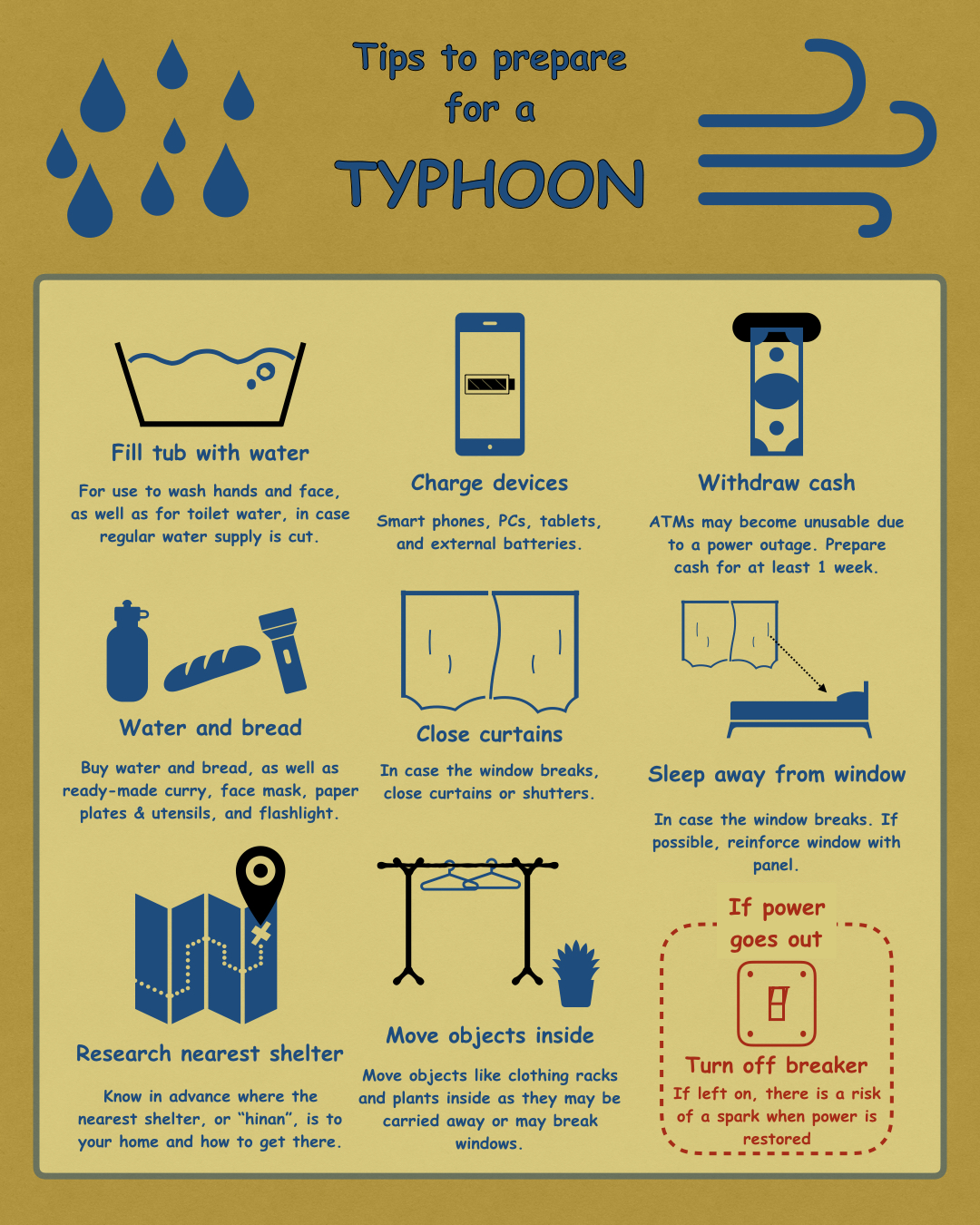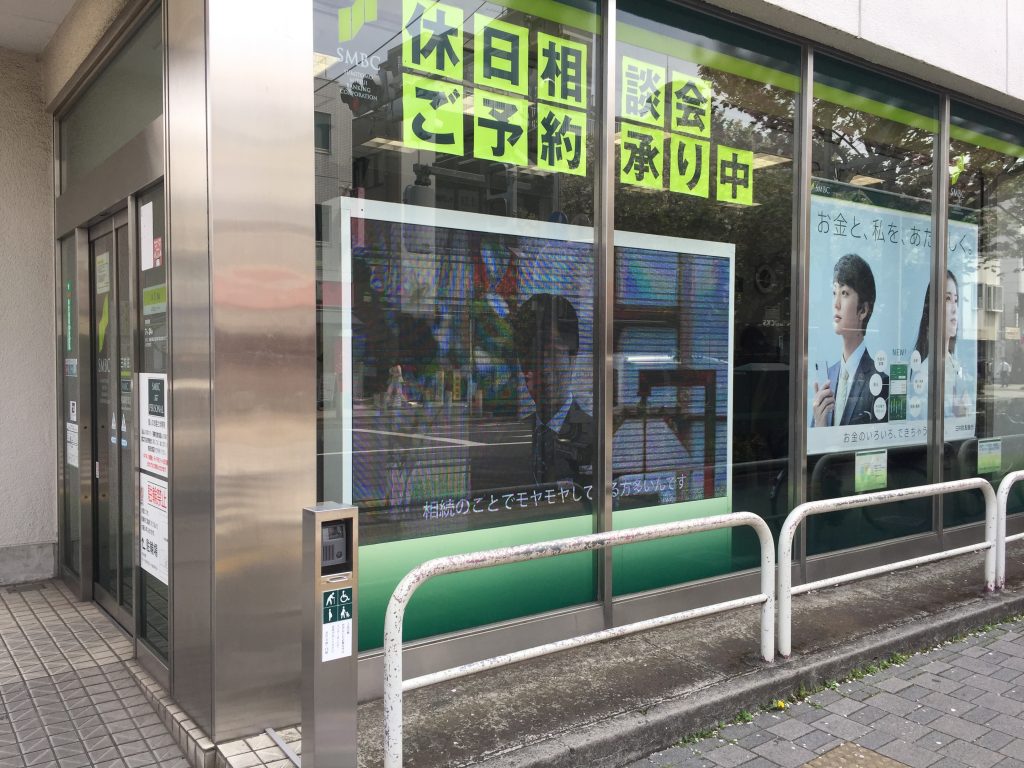+81-3-5990-5540
Message usJapan Blog
Oct 15, 2019
How to Prepare for a Typhoon in Japan
Japan is considerably prone to Typhoons and receives approximately 20 each year, usually between the months of May and October (Typhoon Season) peaking in August and September. That being said, research indicates that the Typhoon season is getting longer and storms are getting bigger, with the typhoons hitting the coastlines of east asia being 15% stronger and the number of super typhoons double that of the 1970s.
With many non-Japanese people living in Japan who may have never experienced a typhoon before, we thought it would be important to share some useful tips in preparing yourself for when the next typhoon is sure to come.
How to prepare for a Typhoon

Here are some of the most important things you can do to prepare for a typhoon in Japan:
- Fill your bathtub with water In the event that the water supply is shut off, having a bathtub of water will provide a source of clean water that you can use to wash your face, hands and body as well as replenish water to the toilet, etc. It is advised to clean your bathtub before filling it, to ensure that the water is hygenic.
- Fully charge your devices
Power outages can be caused by damaged electricity poles, etc. are quite common. Charge all of your electronic devices, including if possible an external battery, so that you can access important information and stay connected to your friends and family.
- Withdraw cash from the ATM or Bank You will lose the ability to withdraw cash in the event that the power goes out. We recommend to plan for a week’s worth of cash needed for food and supplies.
- Buy water & bread, and a flashlight with batteries It is recommended to stock approximately 3L of water per person per day for drinking and cooking water. Because there is a risk of power outages, buy foods that can be eaten without the use of power, like bread, along with disposable plates, cups, chopsticks and cutlery to minimize the need to wash. It is also good to buy food like ready-made curry which can be eaten with little needed preparation. Finally, buy a flashlight if you don’t already have one, and batteries to last you.
- Close your curtains or shutters Closing your curtains or shutters helps to contain broken glass in the event that the high winds or flooding causes damage to your windows. If possible, reinforce your windows with panels and protect them with window covers if available.
- Sleep away from the windows and in full clothing It is safer to sleep away from the windows in the event that they break during a typhoon, especially as you will be asleep. Also, it is best to sleep in clothes that you can leave the house in, as you may need to evacuate in a hurry.
- Research your nearest designated shelter Find out where the nearest designated shelter, known as shitei hinan-jo (指定避難所), is to your home. These are usually public schools and public buildings, which provides food, water, and usually a place to sleep. Run a search on the internet with your address and the words “evacuation shelter”, or check your local city or prefecture’s websites. If you are in Tokyo, you can go here. It is recommended to print out a map, as you may not be able to use your phone in cases of emergencies.
- Bring hazardous objects inside or secure them The strong winds that accompany typhoons can cause objects like clothing racks and plants to be flung or pushed around, which can cause additional damage to your home and break windows. For this reason it is advised to take the necessary precautions to bring them indoors before the storm hits. Large objects that cannot be brought inside like bicycles should be secured.
- If the power goes out, turn off breaker If you have a power breaker in your home, it is advised to use it to disable power to your property in the event of a power outage to avoid electrical surges when the power is restored. When power is restored, first turn on power to your breaker before plugging in and using your appliances.
- Other preparations Although this list of things to do in preparation for a typhoon is not exhaustive, other things worth mentioning include buying or preparing a medical kit with important contact numbers printed and stored securely inside (family, friends, emergency contacts, your embassy), buying a radio to receive important information and in certain circumstances a 2-way radio transceiver for transmitting as well as receiving, and learn emergency- and weather-related vocabulary in Japanese, including their kanji.
In addition to preparing the above, it is important that you access the latest information about your particular area during extreme weather conditions. We recommend visiting the
Japan Meteorological Agency (JMA) Website for real-time warnings & advisories. Given the increase in the number and severity of typhoons to hit Japan each year, we encourage everyone to know what do to in the likely event of a typhoon hitting Japan while you or a person you know is in the country. Accordingly, feel free to download the above image or bookmark this page, and share either with the people you know who are living in or planning to travel to Japan in the future.




